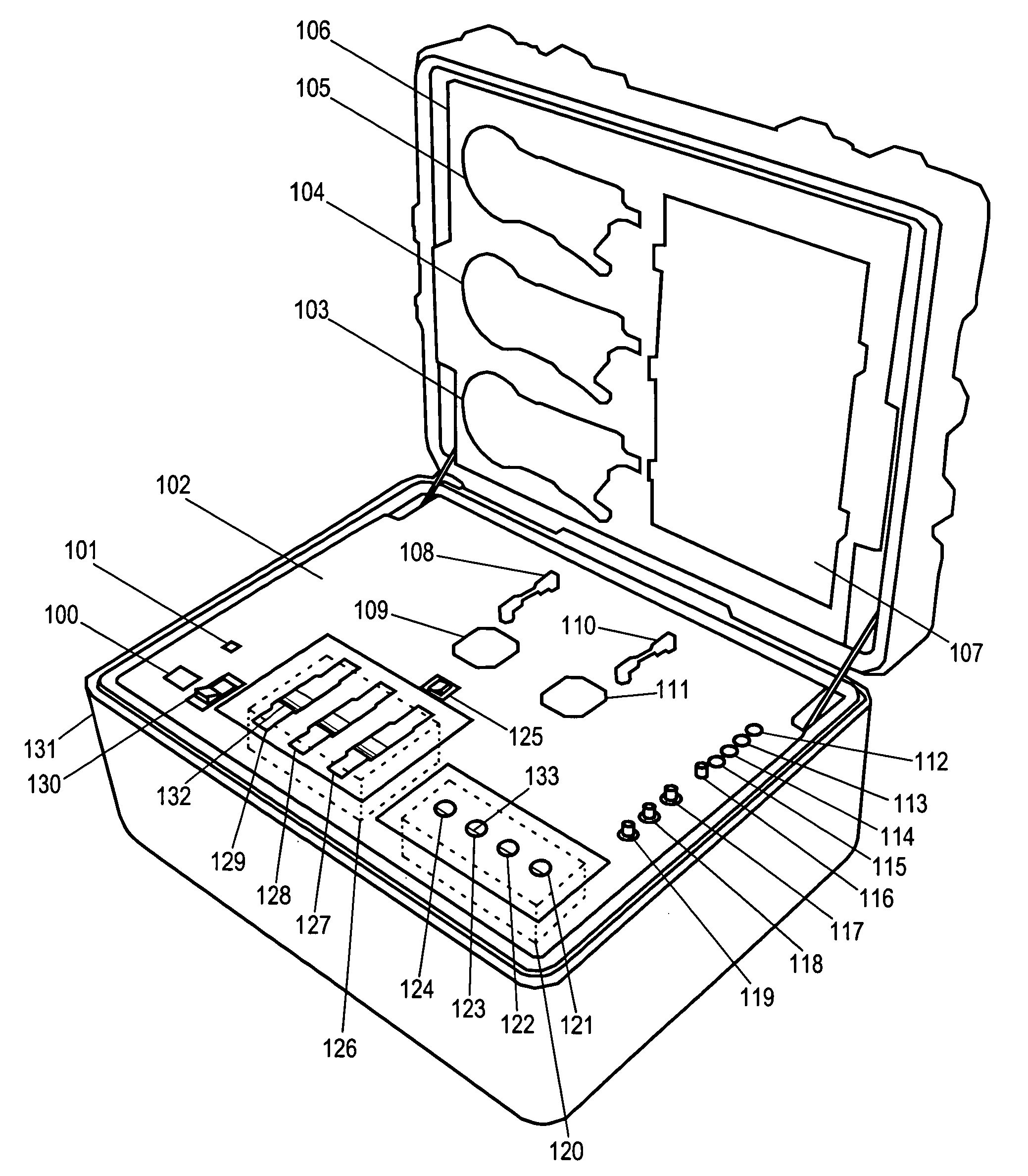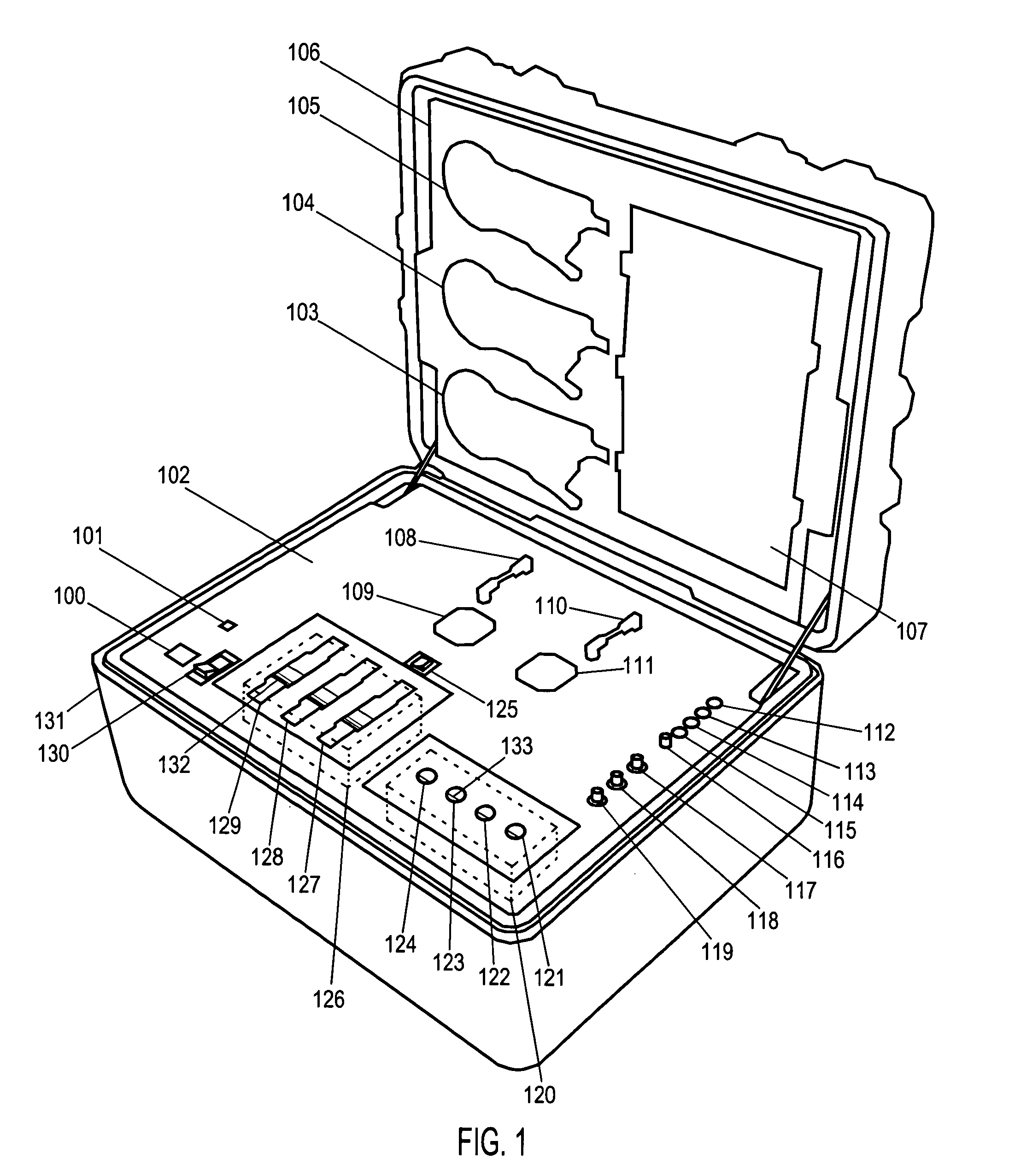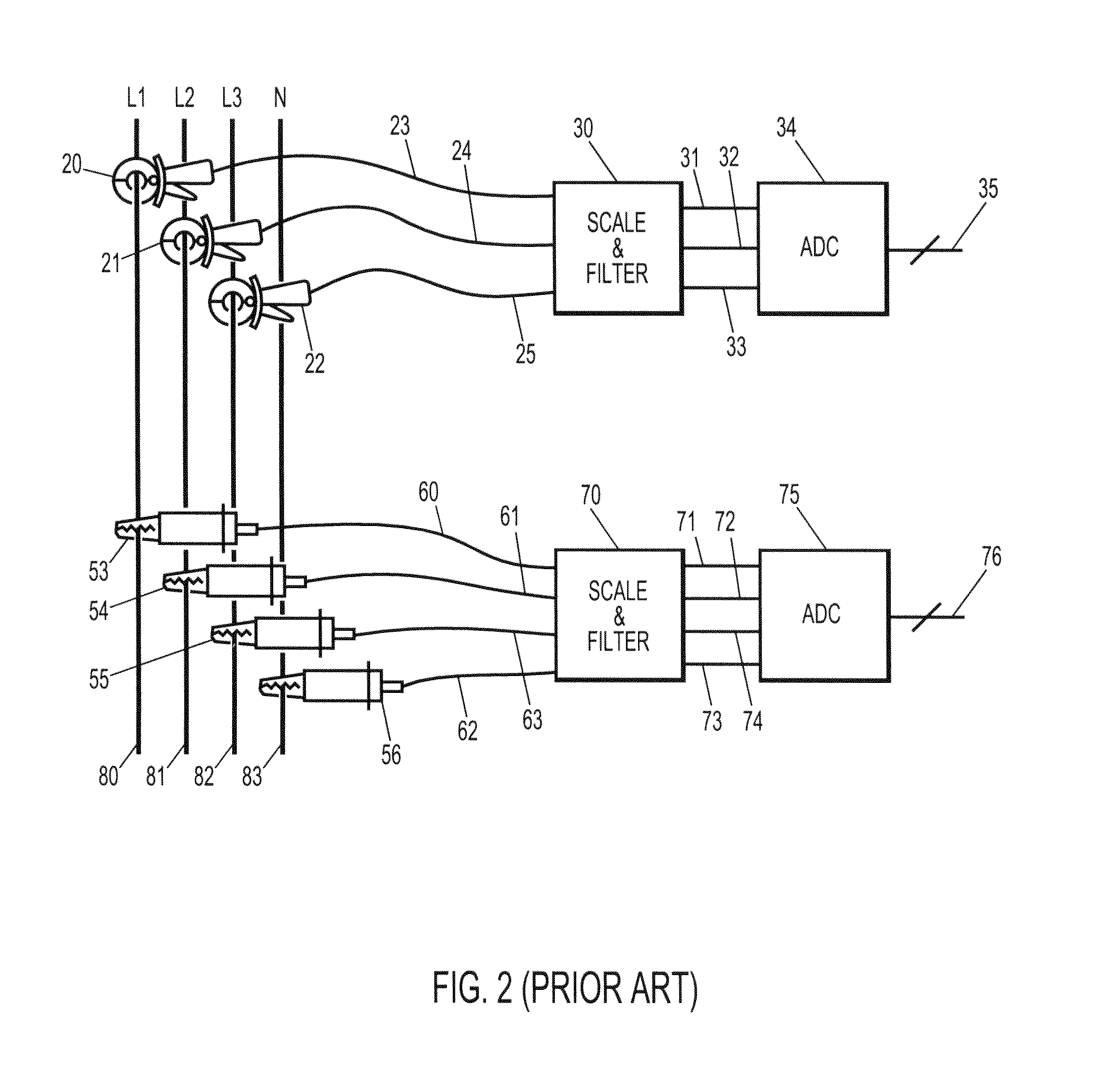Harmonics measurement instrument with in-situ calibration
a measurement instrument and in-situ calibration technology, applied in the direction of instruments, multi-tester circuits, speed/acceleration/shock measurement, etc., can solve the problem of exactly the wrong conclusion about the apparent reversal of the direction of harmonic power flow, and the distortion of voltage and current, etc. problem, to achieve the effect of reducing the cost of a highly stable and accurate instrumen
- Summary
- Abstract
- Description
- Claims
- Application Information
AI Technical Summary
Problems solved by technology
Method used
Image
Examples
embodiment
PREFERRED EMBODIMENT
Operation
[0050]We now turn our attention to FIG. 5. The present invention relates to in-situ calibration just prior to in-situ measurements. However, prior to performing any in-situ self-calibrations, the current calibration source and voltage calibration source used for in-situ calibration must be calibrated at a factory or laboratory 207. Factory calibration correction factors 206 compensate for non-varying errors in the calibration DACs 10,50 and calibration amplifiers 11,51 in FIG. 3, including DC offset, non-ideal amplitude response, and non-ideal phase angle response; these correction factors 206 may also include compensation for how the amplifiers vary with temperature, humidity, and other influencing quantities. The non-ideal phase angle response is, in the preferred embodiment, the phase angle between a current channel and its associated voltage channel. Factory calibration 207 results in a set of factory calibration correction factors 206.
[0051]For reas...
PUM
 Login to View More
Login to View More Abstract
Description
Claims
Application Information
 Login to View More
Login to View More - R&D
- Intellectual Property
- Life Sciences
- Materials
- Tech Scout
- Unparalleled Data Quality
- Higher Quality Content
- 60% Fewer Hallucinations
Browse by: Latest US Patents, China's latest patents, Technical Efficacy Thesaurus, Application Domain, Technology Topic, Popular Technical Reports.
© 2025 PatSnap. All rights reserved.Legal|Privacy policy|Modern Slavery Act Transparency Statement|Sitemap|About US| Contact US: help@patsnap.com



